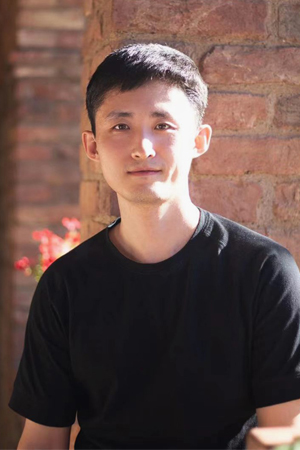Silun Zhang Assistant Professor in the Department of Mathematics at KTH
Silun Zhang took his Ph.D. degree in the Division of Optimization & Systems Theory at KTH in 2019. After a few years at MIT he's back. "Stockholm is an ideal city for both living and working. I like the mindset of freedom, equality, and embracing diverse backgrounds and cultures".
Silun Zhang is an Assistant Professor in the Department of Mathematics at KTH. I am also affiliated with WASP and Digital Futures at KTH.
Before he joined KTH, he was a Postdoctoral Associate and Fellow at MIT with the Laboratory for Information & Decision Systems (LIDS) and the Department of Electrical Engineering & Computer Science (EECS) from 2019 to 2023.
Silun, what are your research area, research interests, research methods, application area?

“My research interest is to tackle several emerging challenges in large-scale connected systems. Examples of such systems are ranging from IoT systems, edge computing networks, smart transportation systems, and robot swarms. These systems, while benefiting from the cooperation among individuals, are vulnerable to privacy breaches due to the information exchange in networks. Moreover, most networked systems can easily contain a large number of various individuals and become large-scale and heterogeneous, which makes modeling, control, and analysis of each individual computationally inefficient and sometimes intractable.
To address these challenges, my research focused on two key areas: (1) Model reduction and controls of large-scale systems by identifying and embedding them on a low-dim manifold and representing them in the dual space of general moments. (2) Privacy-preserving algorithms that harness network dynamics to Coordinate the network without compromising individual privacy.”
What do you think are the large research challenges in your research area and why?
“A significant hurdle in the research of networked systems is that most results take the engagement and authenticity of each agent as granted— an assumption that often doesn't hold in practice. For example, in edge computing, individual agents may lack incentive to contribute their local computational resources and might take advantages by submitting fake or duplicated data. This behavior could dramatically undermine the performance of the algorithms. It is therefore crucial to investigate the mechanism design methods that not only facilitate genuine collaborations but also take into account the nature of network coordination dynamics. This will be an essential step to bring network coordination algorithms into real-world applications.”
If you are looking for some research collaborator(s), what competence are you looking for?
“I will say a scholar endowed with deep technical knowledge in a distinct but complementary research area is always an ideal collaborator. Such interdisciplinary collaborations have the potential to bring fresh air into both fields. Of course, it requires both parties to remain open-minded and ready to reinterpret and reshape their knowledge structures from diverse viewpoints.
Another essential characteristic of an exceptional collaborator is a deep-rooted passion for their research fields. Because the passion is often easy to translate into the curiosity that drives them to explore in new research territories and makes them eager to broaden the reach and impact of their own work.”
Can you tell us more about one of your research results and why you picked it?
“One research project I am working on is the moment-based modeling and interventions of large-scale autonomous systems. By characterizing the system evolution using a sequence of generalized moments, the key behavior of the large-scale system can be captured in a low-dimensional dual space of moments. With a proper selection of kernels, these moments are shown to carry sufficient information to reconstruct the state distributions and some specific collective behavior in the original systems under a reasonable granularity. The moment-based approach provides a systematic way to find the dynamics of these general moment sequences. Compared to the classical methods involving PDE dynamics, this approach offers reduced complexity in both time and storage.”
Lastly, what do you like with Sweden, Stockholm and KTH?
“I obtained my Ph.D. degree from KTH, and one compelling reason attracting me back is the opportunity to reunite with old friends and work with acquainted colleagues. Moreover, the mindset of freedom, equality, and always embracing diverse backgrounds and cultures makes Stockholm an ideal city for both living and working.”
